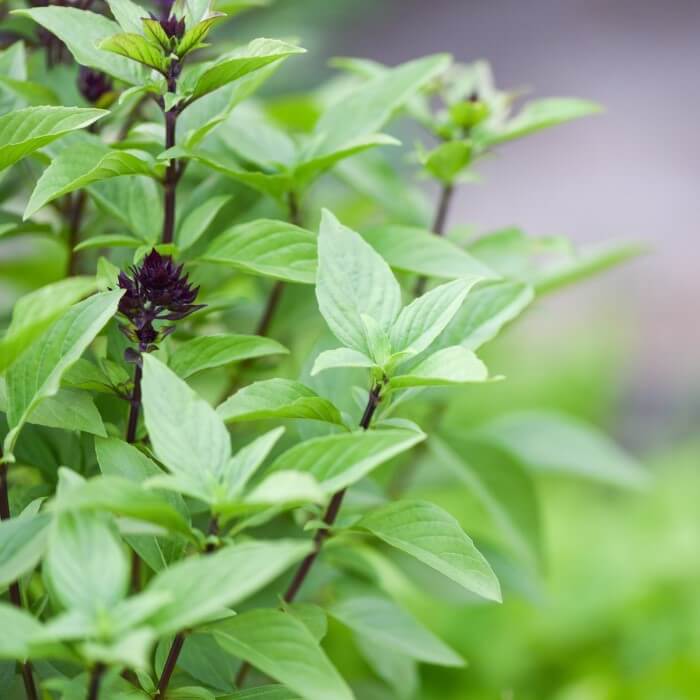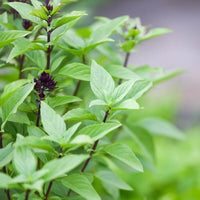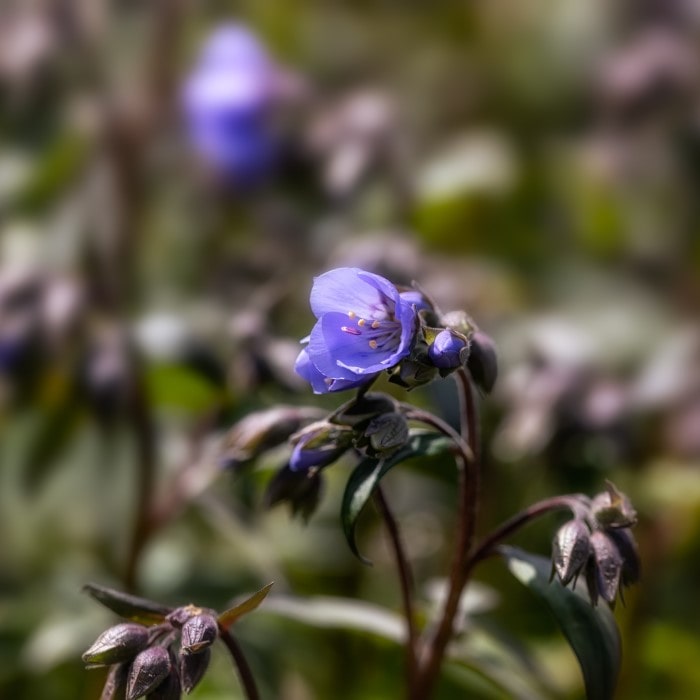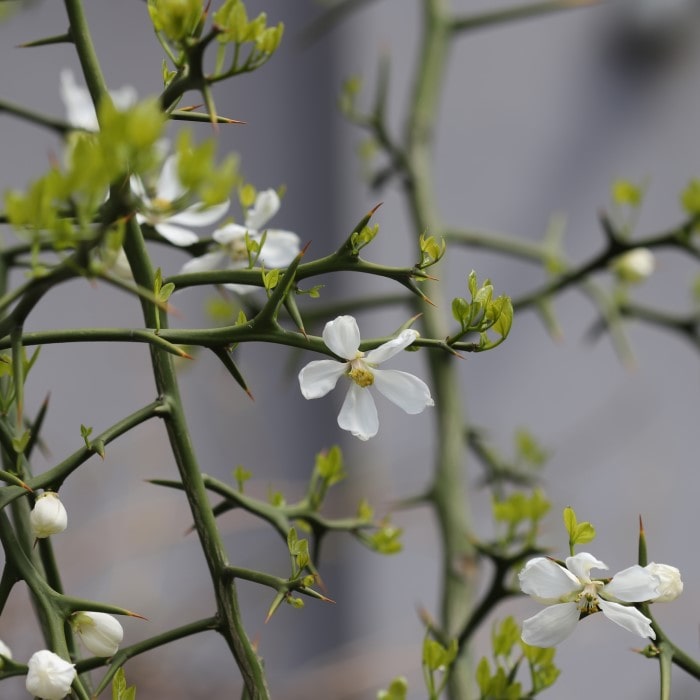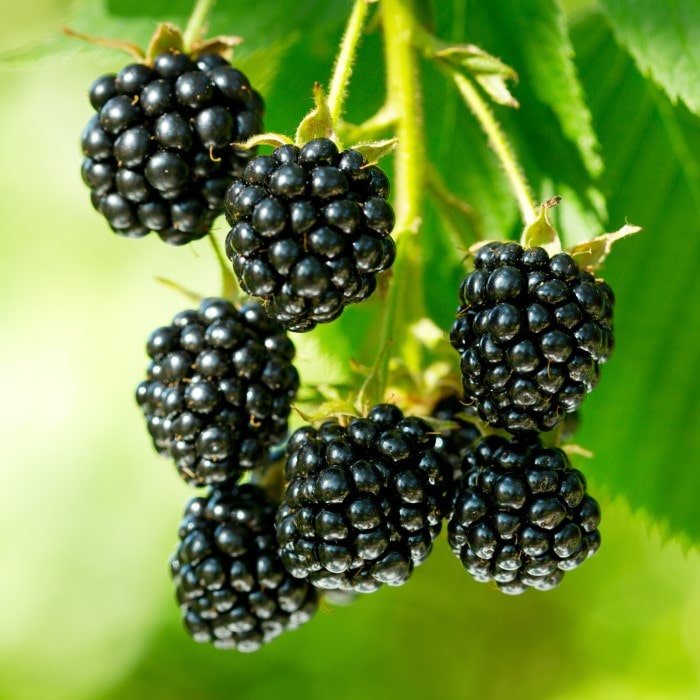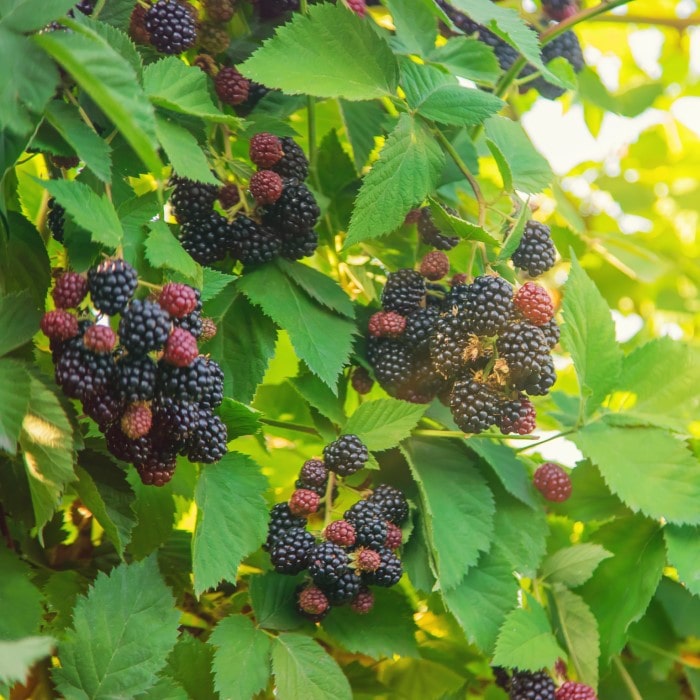Ocimum basilicum var. thyrsiflora
Overview
Uses: Herb: can be used fresh or dried. May also be used for landscaping and as an indoor or outdoor potted plant.
Benefits: Sweet Thai Basil variety grows slightly serrated, narrow, shiny green leaves as large as 2 inches in size. Has a slightly spicier flavor profile than most other basils, with hints of licorice. Grows insignificant purple flowers that are known to attract pollinators such as bees.
USDA Hardiness Zones: 10 - 12 (grown as an annual in cooler zones w/ temperatures above 60°F)
Sun: Full
Life Cycle: Annual (Perennial in zones 10 - 12)
Mature Height: 18"
Mature Width: 12"
Bloom Season: Summer
Summary
Sweet Thai Basil is best known for its purple stems and 1"-2" leaves that are smaller than those on most other types of basil. Its leaves have a unique flavor with spicy undertones and hints of clove and anise. Also has hints of anise/licorice in its aroma.
This basil will not break down as easily as other sweet varieties of basil when cooked at high temperatures.
Provides a wonderful smell to the areas that it grows in.
It can be grown indoors and on your patio as a potted plant, and also thrives when planted outside assuming the soil and air temperatures are above 55°F.
Grows beautiful purple flowers that attract pollinators and may be used in cooking.
Care
Sweet Thai Basil Care
Provide at least 6 hours of full sun daily.
Flower development will occur mid to late summer. Flowers may be pinched to encourage a bushy plant full of foliage. Flowers may also be left alone to provide area beautification, attract pollinators, harvested for use in cooking, or allowed to go into seed. The purple flowers of Sweet Thai Basil are an excellent garnish for cocktails.
By pinching and preventing blooming you also help preserve the plants natural volatile oils which are responsible for the plants robust flavor and aroma.
Water regularly after planting or repotting, keeping soil moist but not wet until the plant is established. We suggest attempting to make sure your basil plant gets about 1" of water every week during periods of growth.
Established basil does best with the minimal amount of water and fertilizer required to keep it alive. Over watered and over fertilized basil seems to not have a taste as delicious as it should.
Basil is a great companion plant to most vegetables, but avoid growing with cucumbers and other herbs (especially sage).
Planting with tomatoes will repel many pests and attract beneficial insects to your tomato plants.
This variety of basil likes warmer temperatures than many others. Do not allow exposure to temperatures below 60°F, as these temperatures may damage this plant. It does best in temperatures above 70°F and below 90°F.
Size
Size of Sweet Thai Basil for Sale Online
The Sweet Thai Basil Plants that we sell online will ship in a greenhouse grade grow pot. Each plant will be appropriately sized for its pot. Please contact us with any specific questions.
Size of Sweet Thai Basil When Fully Grown
Sweet Thai Basil typically grows to a size of around 18" tall and 12" wide. Its size may grow as large as 20" tall and 15" wide.
Additional Information
Botanical Name of Sweet Thai Basil
-
Ocimum basilicum var. thyrsiflora
Toxicity and Risks of Basil
Ocimum basilicum is not considered to be toxic to people or pets when consumed in normal doses; however, it does contain chemicals such as estragole that can be toxic in large doses.
It is very unlikely that anyone would consume enough basil to be concerned about the threat of estragole poisoning. One must be careful; however, not to drink too much basil tea or basil oil, as these sources often concentrate chemicals. As such, we suggest drinking no more than 2 cups of basil tea a day, and not eating or drinking any basil oil without guidance from a medical professional.
